Kameleon007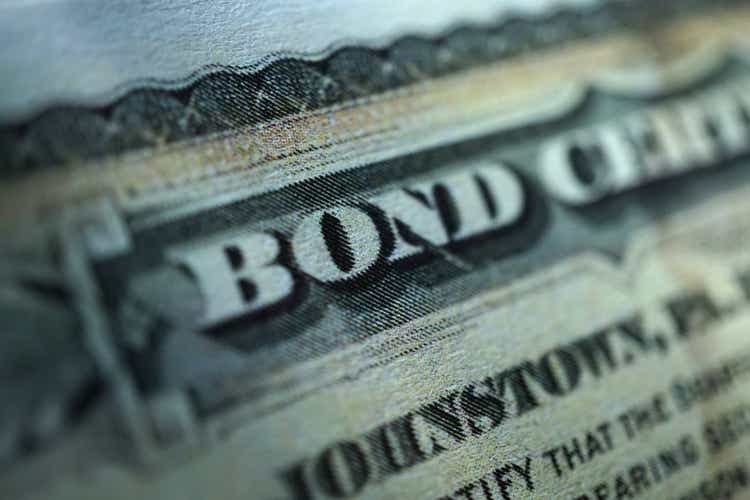
(This article was co-produced with Hoya Capital Real Estate)
Introduction
This will be (hopefully) the first in a series of articles comparing various corporate bond strategies against each other. I envision articles based on maturity, credit risk, issuer type, and maybe different managers executing the same strategy. This one is a weighted-average-maturity, or WAM, based article which will review and compare a short WAM exchange-traded fund (“ETF”), the iShares 0-5 Year High Yield Corporate Bond ETF (NYSEARCA:SHYG) against a longer WAM ETF, the iShares iBoxx $ High Yield Corporate Bond ETF (NYSEARCA:HYG). When everything else is equal, shorter maturities should perform better than longer maturities when interest rates are rising or investors believe they are.
What makes this timely is that expectations are changing and more pundits think we could be near the top in rates. Of course, there is no uniform opinion on that. By comparing two ETFs that only invest in High-Yield Corporates, two other performance variables are removed: credit risk and issuer type.
Background data
As of the end of the second quarter, the above shows yield, duration (which is related to maturity), plus the Yield/Duration ratio. Except for Senior Loans, with their extremely short duration, the Y/D ratio is very close for the rest of the bond types. High-Yield taxables have the best Yield-to-Worst value.
Knowing the top of the current interest-rate cycle would help in deciding which WAM one might want. As I write this, the 10-Year Treasury Constant Maturity Rate is 2.68% versus the FFR target of 2.25-2.5%, meaning the top has not been reached based on past history. Whether July’s drop in the YOY inflation rate will change Fed actions is now open to debate.
iShares 0-5 Year High Yield Corporate Bond ETF review
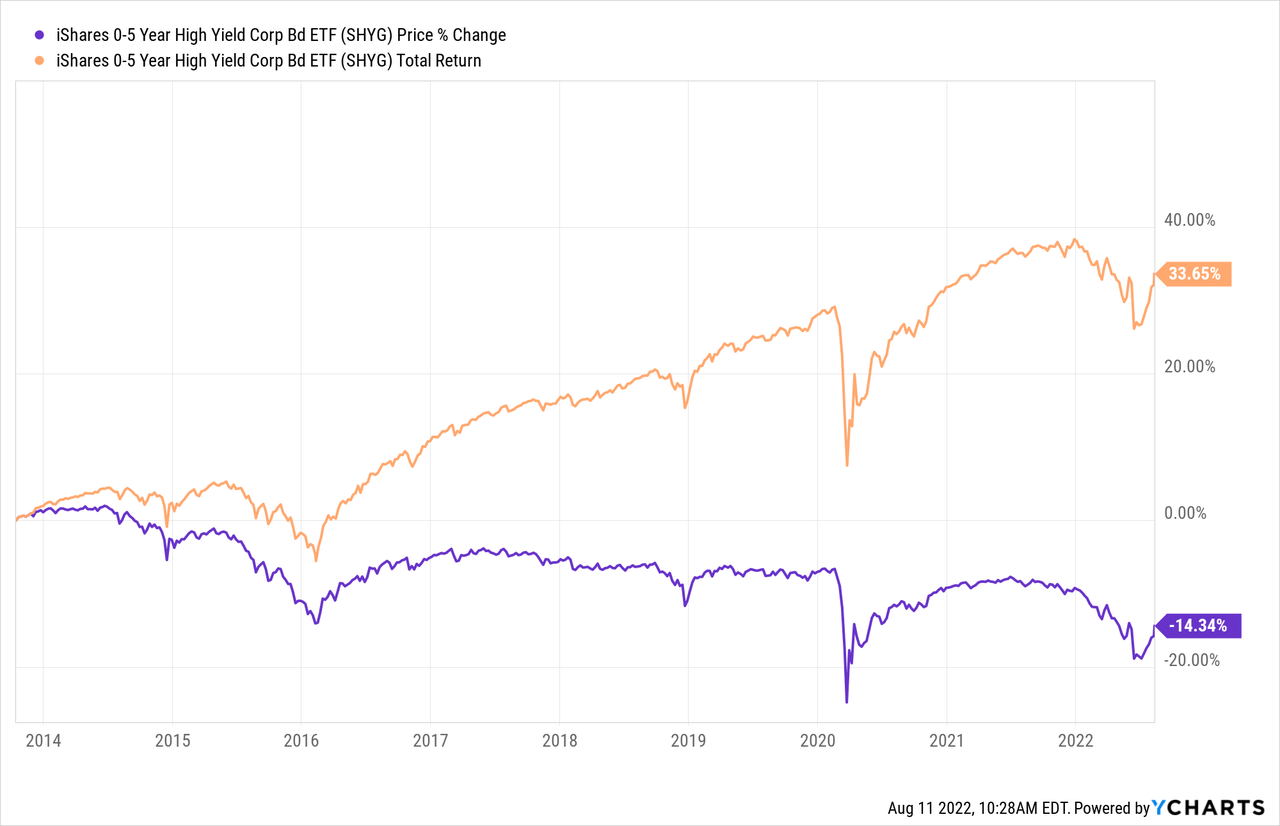
Seeking Alpha describes this ETF as:
The iShares 0-5 Year High Yield Corporate Bond ETF is managed by BlackRock Fund Advisors. It invests in the fixed income markets of the United States. The fund invests in the U.S. dollar-denominated, corporate bonds securities that are rated as below investment grade. It seeks to invest in securities with maturity of 0-5 years. The fund seeks to replicate the performance of the Markit iBoxx USD Liquid High Yield 0-5 Index. SHYG started in 2013.
Source: seekingalpha.com SHYG
SHYG has $5b in assets under management (“AUM”) and has a 5.1% trailing yield. The managers charge 30bps in fees.
Index review
Before investing in any passively-managed ETF based on an underlying index, understand the methodology the index uses should be examined. The Index manager provides this description:
The Markit iBoxx USD Liquid High Yield 0-5 Index consists of liquid USD high yield bonds, which provide a balanced representation of the USD denominated short duration high yield corporate bond universe. The index is an integral part of the global Markit iBoxx index families, which provide the marketplace with accurate and objective indices by which to assess the performance of bond markets and investments. The index is market-value weighted with an issuer cap of 3%.
Source: cdn.ihsmarkit.com 0-5 Index
The next table provides important Index guidelines. The Index rebalances monthly.
SHYG holdings review
iShares provides the following data about the SHYG ETF:
Sector allocations currently are:
ishares.com SHYG sectors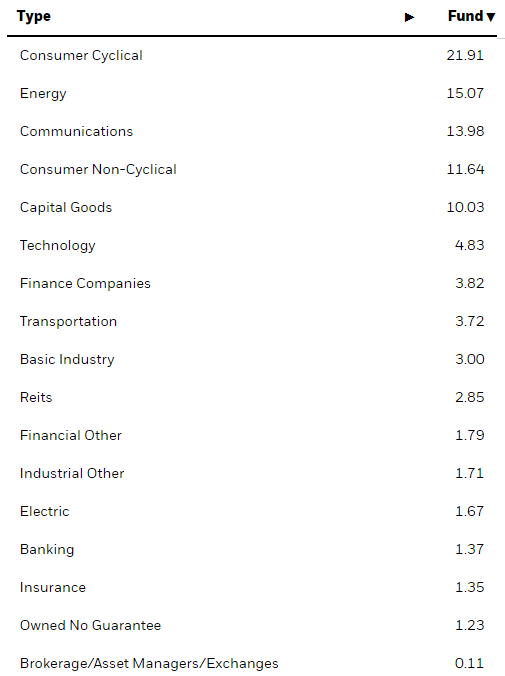
Over 70% of the bonds were issued by a company in the Top 5 sectors, most of which are tied more closely to the economic cycle than the less-owned sectors.
ishares.com SHYG quality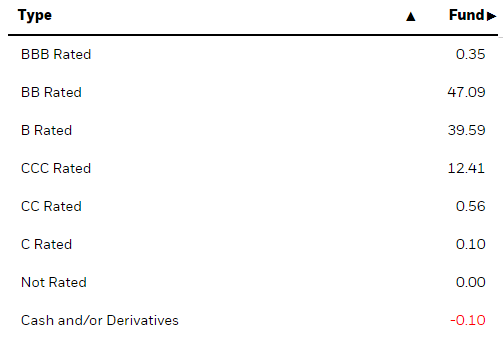
With BBB-rates as the only ones rated investment-grade, unlike some ETFs, they have stayed within their HY (non-investment-grade) mandate. The next chart shows the maturity schedule, which becomes very important when rates are rising.
ishares.com SHYG maturities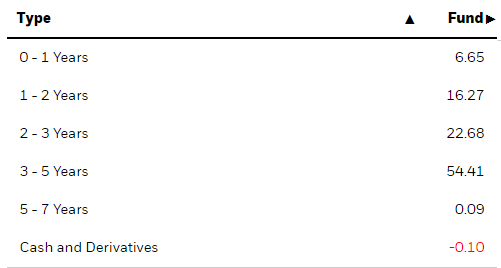
With almost 23% of the bonds maturing over the next two years, that provides funds for investing in new bonds as the short-end of the rate curve climbs. Some of the 3-5 year bonds would have been added during the current cycle of increasing rates.
Top 20 holdings
ishares.com SHYG holdings; compiled by Author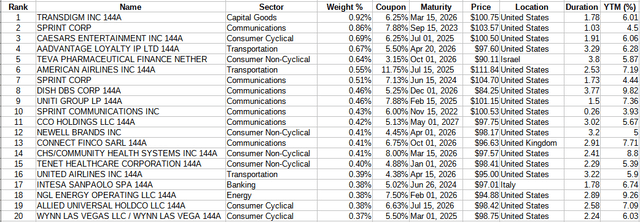
With over 700 bond positions, the Top 20 are only 10% of the portfolio’s weight. In a HY ETF, a diverse set of holdings helps mitigate defaults risk. For SHYG, this has importance as 13% of the bonds are rate below “BB” where defaulting has an enhanced possibility.
SHYG distribution review
With the recent payout increases, the monthly rate is back to the early 2021 levels. Documentation shows all comes income source, not LTG/STG or ROC.
iShares iBoxx $ High Yield Corporate Bond ETF review
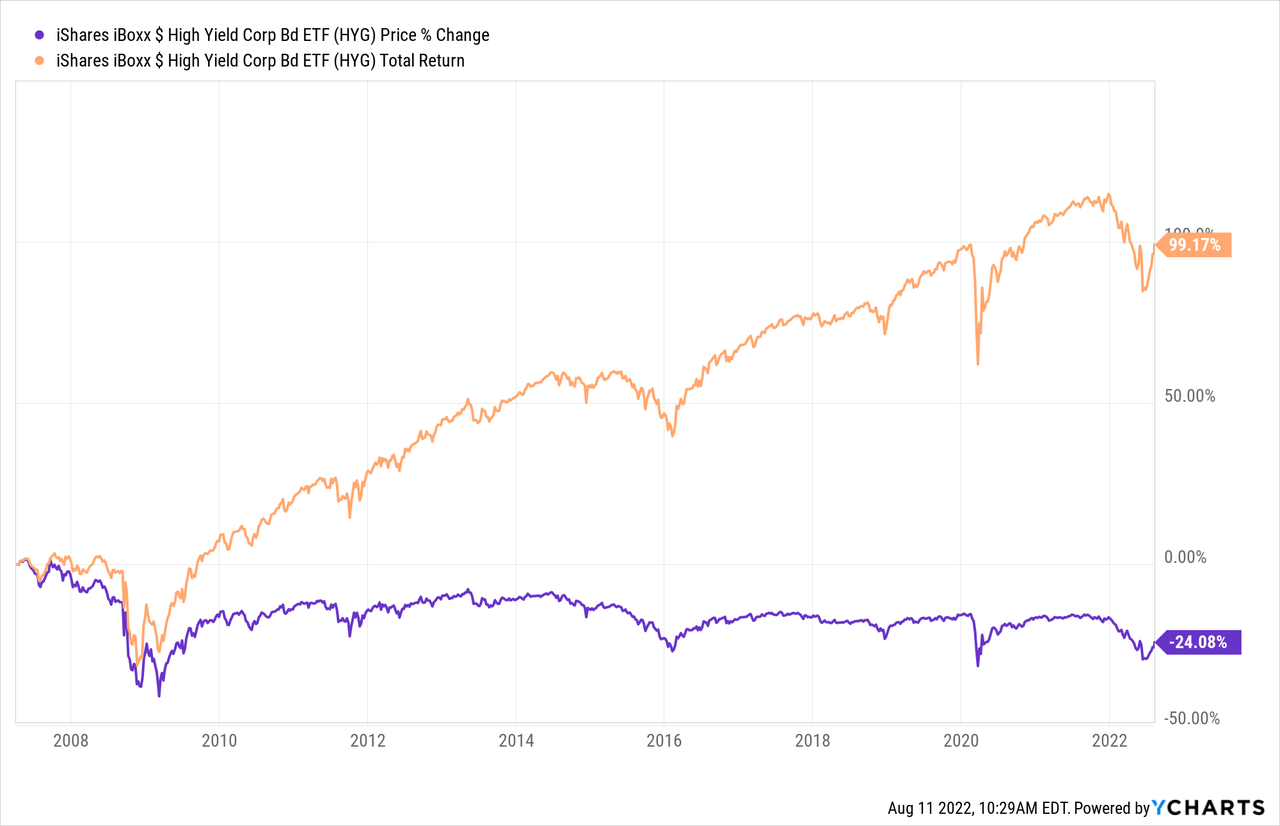
Seeking Alpha describes this ETF as:
The Trust – iShares iBoxx $ High Yield Corporate Bond ETF is an exchange traded fund launched by BlackRock, Inc. It is managed by BlackRock Fund Advisors. The fund invests in fixed income markets of global developed region. It invests in U.S. dollar-denominated high yield corporate bonds with a maturity of at least one year and less than 15 years and a sub-investment grade rating from Fitch, Moody’s or S&P. The fund seeks to track the performance of the Markit iBoxx USD Liquid High Yield Index. HYG started in 2007.
Source: seekingalpha.com HYG
HYG has $14.5b in AUM and has a 4.6% trailing yield. The managers charge 48bps in fees.
Index review
HYG uses the less restricted version of the index used by SHYG. It is also rebalances monthly.
The Markit iBoxx USD Liquid High Yield Index consists of liquid USD high yield bonds, selected to provide a balanced representation of the USD high yield corporate bond universe. The indices are an integral part of the global Markit iBoxx index families, which provide the marketplace with accurate and objective indices by which to assess the performance of bond markets and investments. The index is market-value weighted with an issuer cap of 3%.
Source: cdn.ihsmarkit.com Full Index
cdn.ihsmarkit.com Index PDF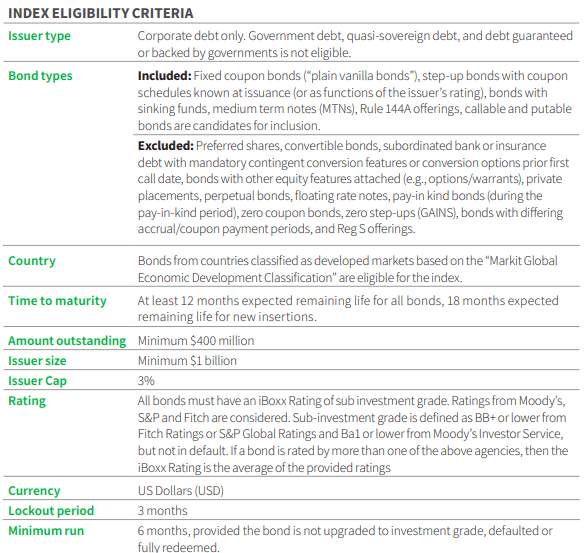
HYG holdings review
The portfolio characteristics for HYG are:
ishares.com HYG ishares.com HYG sectors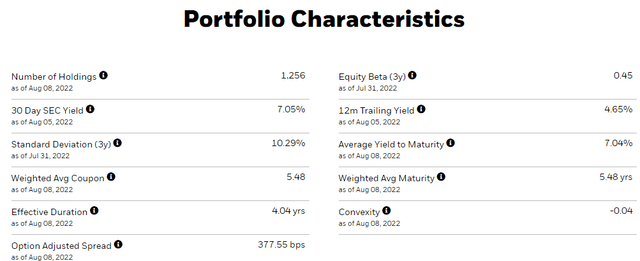
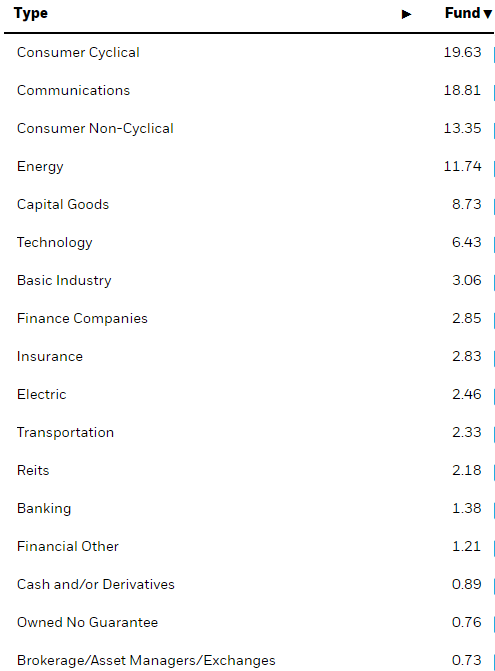
The Top 5 sectors match SHYG, though at different weights. Here, the total is close to 73%, slightly more than SHYG has in its top sectors.
ishares.com HYG quality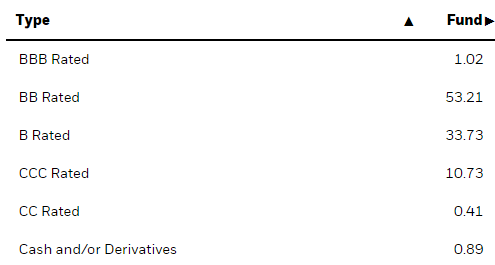
While more than SHYG’s, HYG’s percent in investment-grade bonds is also meaningless. While less than SHYG’s, HYG still holds over 11% in bonds rated “CCC” or lower where default risk is much greater.
ishares.com HYG maturities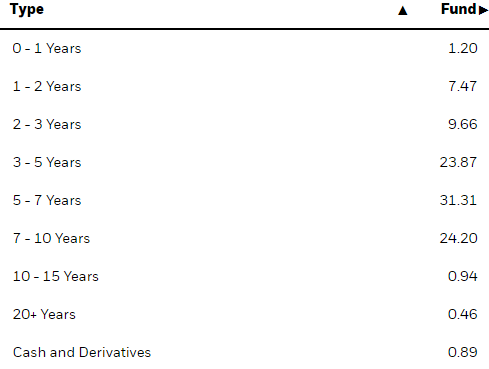
The above schedule reflects the difference in the maturity focus of HYG versus SHYG, and one of the more important factor investors need to consider. Despite the longer focus, HYG still has 9% maturing within two years, though this is only 40% of what SHYG has. More important is the fact that HYG has about 57% of its portfolio maturing after the last bond held by HYG does. These differences are reflection in each ETF’s WAM data.
Top 20 holdings
ishares.com HYG holdings; compiled by Author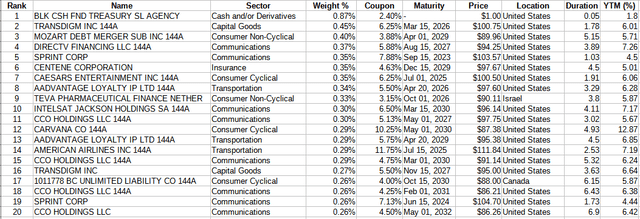
Not counting the cash, the other bonds account for 6% of the portfolio. As with SHYG, all bonds are denominated in USD, including those with other countries listed.
HYG distribution review
Unlike SHYG, HYG isn’t showing consistent payout boosts. Payouts do show some relationship to the level of interest rates.
Comparing ETFs
| Factor | SHYG | HYG |
| # of bonds | 717 | 1256 |
| Duration/WAM | 2.44/3.02 yrs | 4.04/5.48 yrs |
| Yield | 5.1% | 4.6% |
| Yield-to-Maturity | 9.00% | 8.52% |
| Weighted Average Coupon | 6.18% | 5.48% |
| Weighted Price | $97.94 | $93.98 |
| Weighted Credit Rating | B+ | B+ |
| Fees | 30bps | 48bps |
| Investment-Grade weight | .35% | 1.02% |
The above points out an advantage shorter duration/WAM funds have; that being a more rapid movement into higher yielding bonds. This is reflected in SHYG having a higher WAC than HYG has by 70bps. Logic says longer maturities should yield more but rapid portfolio turnover can temporarily override that. HYG’s longer WAM also shows in the fact its weighted-price is lower than SHYG’s as longer-dated bonds suffer more as rates increase.
Despite having a different duration and WAM, the two ETFs experienced a 97% correlation in their price movements since late 2013.
Portfolio strategy
As mentioned above, there are multiple ways to slice/dice just the Corporate bond market, let along the total bond market. One decision is whether this is an ideal time to be buying ETFs focused on HY bonds. The next chart might say “no,” but opinions differ if your search the topic.
schwab.com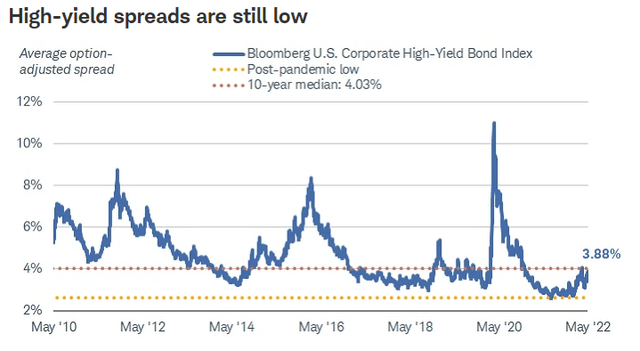
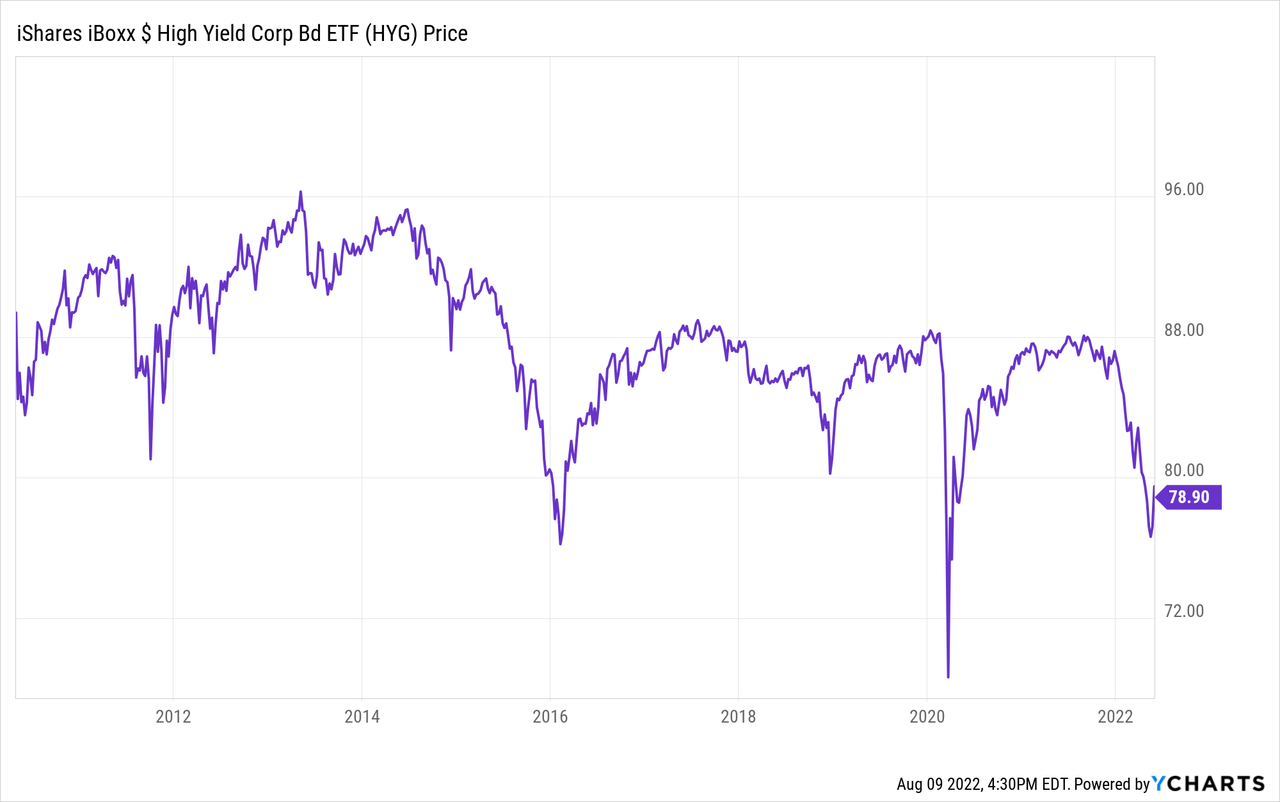
The above chart covers the same time frame (SHYG was not around in 2010). It does appear that HY bonds did best when the spread over USTs was shrinking, not growing as it has been in recent months.
In the next chart, I compare how both HYG and a Investment-Grade Corporate bond ETF, the PIMCO Investment Grade Corporate Bond Index ETF (CORP) price movements over the same time frame.
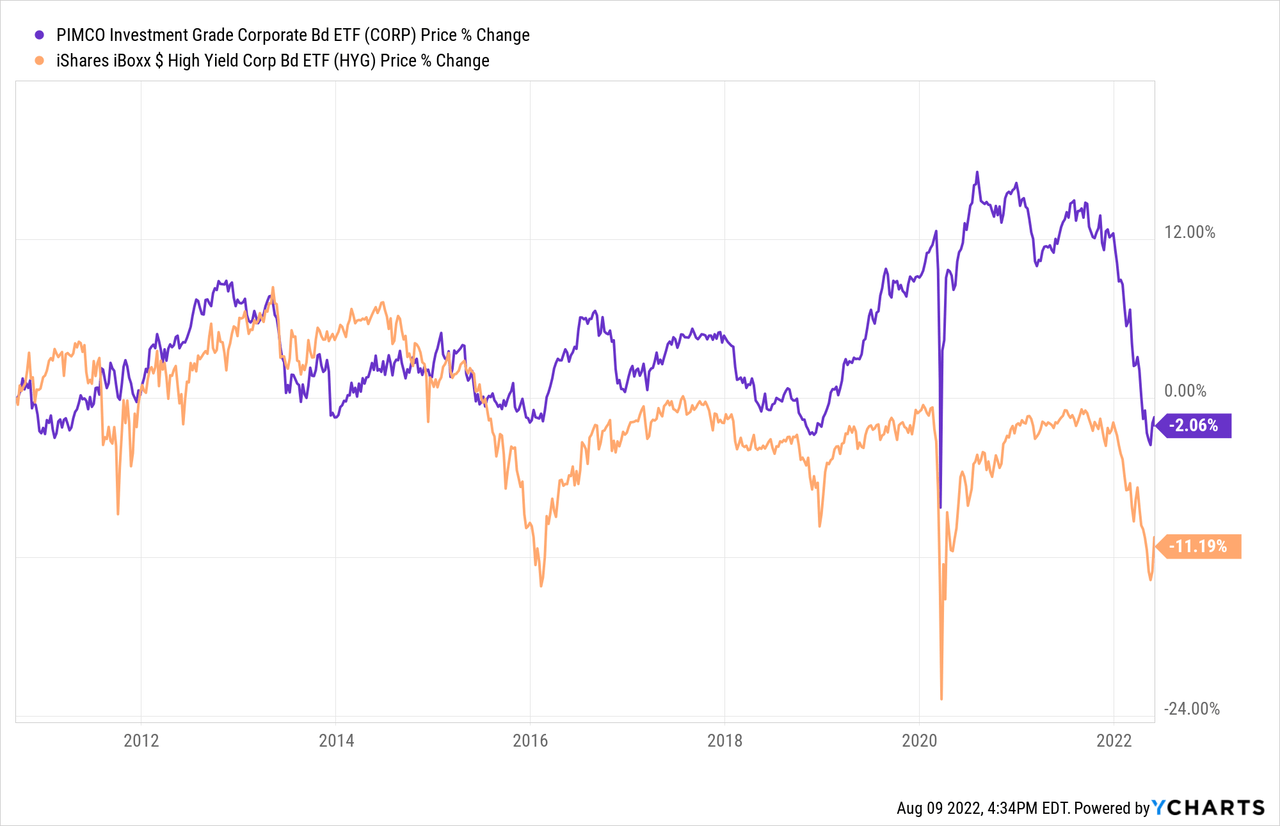
According PortfolioVisualizer, CORP had a lower StdDev than HYG during this time and in early years that is more observable. Monthly correlations show that these two ETFs at 65%, with HYG more correlated (75% vs 45%) to U.S. stocks.
Final thoughts
iShares has a third HY Corporate Bond ETF, the iShares Broad USD High Yield Corporate Bond ETF (USHY). Another choice for Corporate bond investors is funds that screen issuers based on a set of Environmental, Social, and/or Governance (ESG) rules. I reviewed and compared such an ETF recently: VCEB Vs. VCIT: Going ESG In Corporates Is Not Working


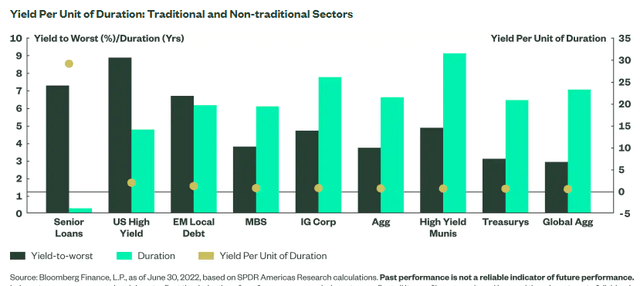
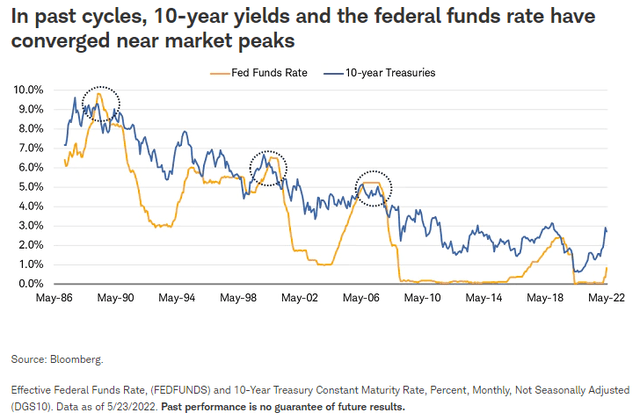
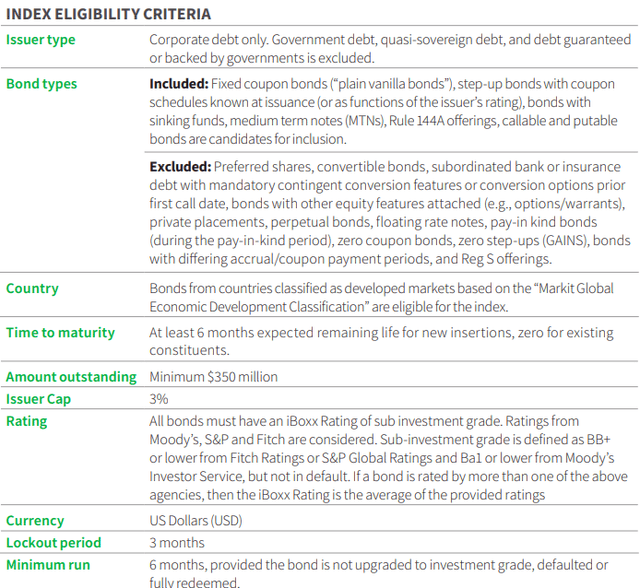
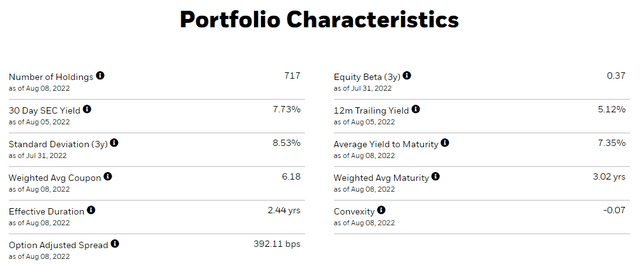


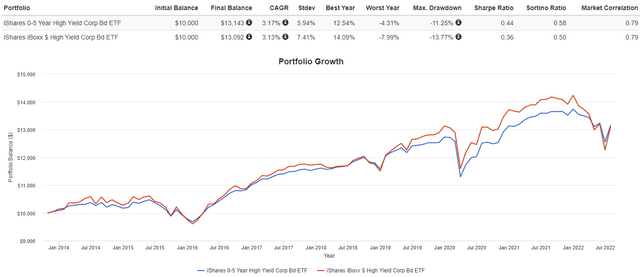
Be the first to comment